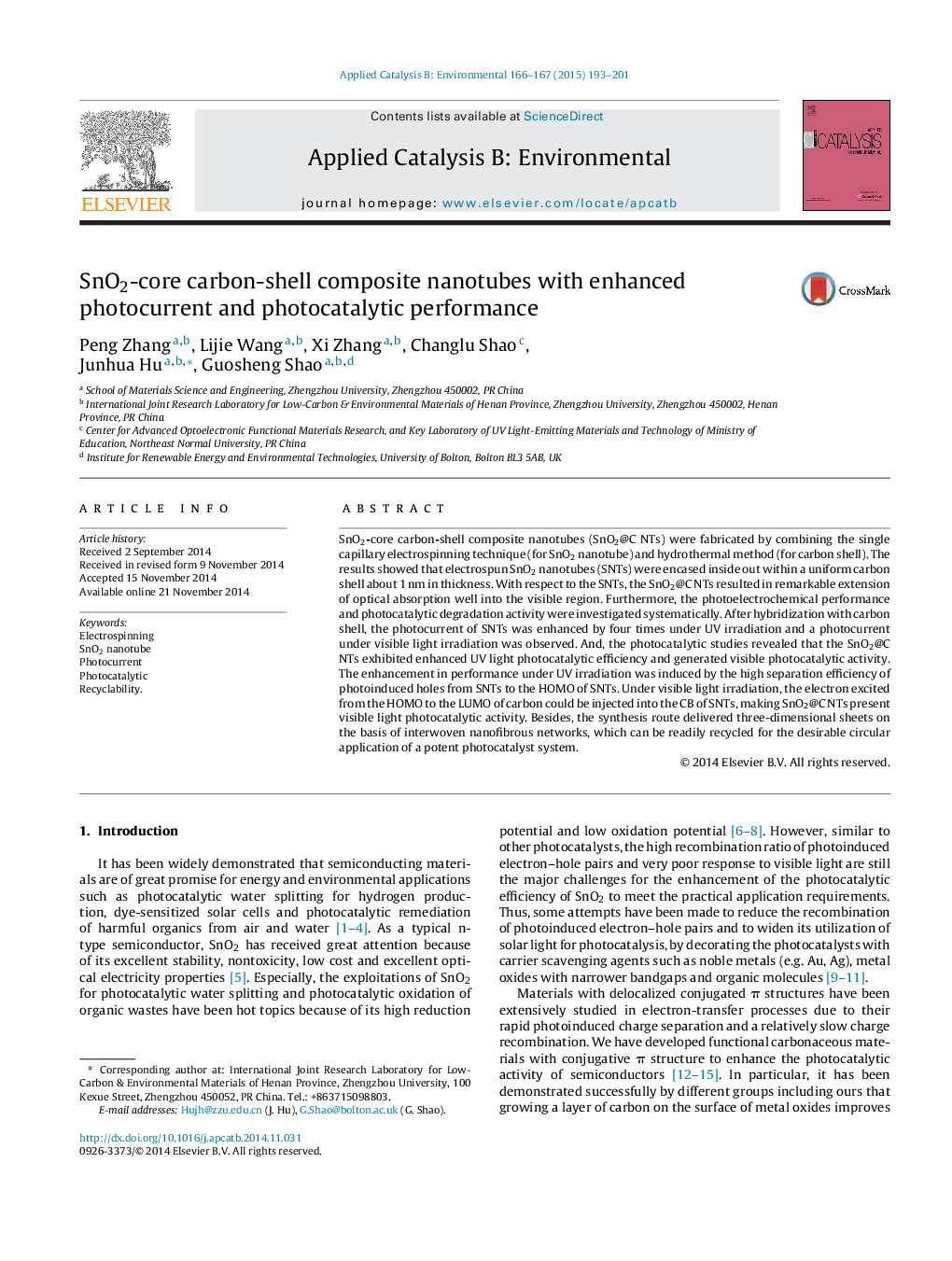| Article ID | Journal | Published Year | Pages | File Type |
|---|---|---|---|---|
| 45710 | Applied Catalysis B: Environmental | 2015 | 9 Pages |
•Synthesis of SnO2-core carbon-shell composite nanotubes.•SnO2@C NTs showed enhanced photocurrent and photocatalytic performance.•Easy photocatalyst separation and reuse.•A general way to fabricate other carbon-coated nanotubes photocatalysts.
SnO2-core carbon-shell composite nanotubes (SnO2@C NTs) were fabricated by combining the single capillary electrospinning technique (for SnO2 nanotube) and hydrothermal method (for carbon shell). The results showed that electrospun SnO2 nanotubes (SNTs) were encased inside out within a uniform carbon shell about 1 nm in thickness. With respect to the SNTs, the SnO2@C NTs resulted in remarkable extension of optical absorption well into the visible region. Furthermore, the photoelectrochemical performance and photocatalytic degradation activity were investigated systematically. After hybridization with carbon shell, the photocurrent of SNTs was enhanced by four times under UV irradiation and a photocurrent under visible light irradiation was observed. And, the photocatalytic studies revealed that the SnO2@C NTs exhibited enhanced UV light photocatalytic efficiency and generated visible photocatalytic activity. The enhancement in performance under UV irradiation was induced by the high separation efficiency of photoinduced holes from SNTs to the HOMO of SNTs. Under visible light irradiation, the electron excited from the HOMO to the LUMO of carbon could be injected into the CB of SNTs, making SnO2@C NTs present visible light photocatalytic activity. Besides, the synthesis route delivered three-dimensional sheets on the basis of interwoven nanofibrous networks, which can be readily recycled for the desirable circular application of a potent photocatalyst system.
Graphical abstractFigure optionsDownload full-size imageDownload as PowerPoint slide
